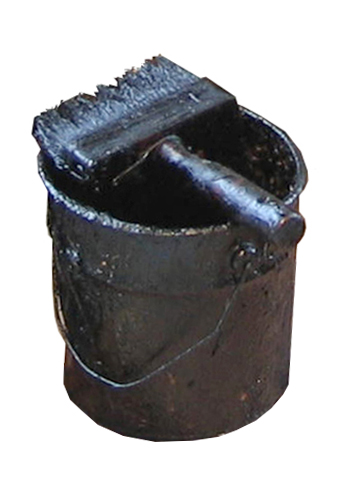Tar
- Can be mixed with drying
- Solvent: coniferous turpentine
- Tools: Mineral turpentine can be used for washing
- By using a hot brush you can get the best results on a dry wood surface.
Oxygen, the sun and water will make tar brittle so it is recommended to use natural oils like tang oil, linseed oil or hemp oil with tar. This makes the tar more elastic and flexible.
No paint will stick on tar or a substance that has lots of tar in it.
Usage: For getting a protective layer on strong wood or previously tarred wood, like log buildings, docks, outdoor furniture, wooden boats and occasionally for indoor furniture.
Old tar mix recipe
1 part Linseed oil, hemp oil or tung oil
1 part Tar
1 part Pinewood turpentine
Modern linseed oil and paint oils don’t have any mold blocking substances in them so to prevent molding from happening, a preventing substance is added to the mix. Paint stores might have a few options for this.
The consumer is obligated to find a suitable wood preservative that works with tar. A professional retailer will guide the consumer if needed. Wood preservative’s work as is or tar can be added to the mix with a ratio of 2:1 or 1:1
Soft soap treatment
- Protects from dirt.
- Doesn’t protect from fluids from absorbing to the wood.
- Chloride based soaps can’t be used on a surface that was soft soap treated.
- Tools: Normal cleaning tools
Usage: Cleaning oiled surfaces and maintaining panels. Soft soap can be found transparent or with a bleached color that will give a light tone and will also highlight tones gotten from a light oil.
Soft soap mix
First treatment 2dl / 10l water
Next treatment 0,5dl / 10l water